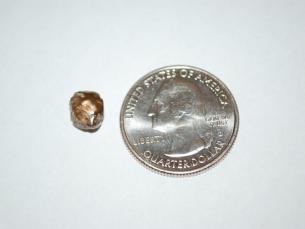The Milkweed Archipelago
By: Arkansas State Parks Staff“The universe has as many different centers as there are living beings in it.” Alexander Solzhenitsyn
A tiny island of orange beckons an orange butterfly. Down she goes as millions of her ancestors have for eons of time. This brilliant orange flower and this beautiful insect have a relationship common in nature. Milkweed is required for the reproduction of the Monarch butterfly. The plant has many defenses for protection from hungry bugs. One of the most potent is a chemical called cardiac glycoside. It is poisonous to most animals. It is life to the Monarch.
The female carefully sticks her cone shaped eggs to the bottom of the milkweed leaves. In a few days they will hatch, and the tiny caterpillars will find themselves on a salad bar perfect for their taste. Cardiac glycoside is the flavor they crave. They like it so much it becomes part of them, stored in their tissues.
When they emerge from the chrysalis, their bright orange wings will fill with fluid. Not only are they bold and bright in color, they fly slowly. They are an easy target for insect eating birds. Monarchs are easy to catch, but hard to digest. Glycoside from the milkweed causes a nasty stomach upset for the hungry bird, and the bright orange and black pattern of the Monarch makes it easier to remember the nauseating dining experience. It is no longer on the menu. Monarchs that fly past this bird in the future can pass in safety. The bold pattern of the monarch is a warning coloration. While many species in the animal kingdom try to blend in, the monarch, armed with its own version of chemical warfare, stands out.
At least two other insects have adapted to eating milkweed and making glycoside their own. The Milkweed Beetle and Milkweed Bug feed only on milkweed. The orange-red Milkweed Beetles are often seen on the leaves, and the red and black Milkweed Bugs can be found on the seedpods. They are brilliant, beautiful, and a sickening meal for predators.

Rich Mountain is an excellent stopover for Monarchs due to the many species of wildflowers that bloom during the end of September and the beginning of October. We can’t predict the exact days of the migration, but it usually happens in the first days of October.
A wave of orange will descend onto the white, yellow and blue flowers along the Lover’s Leap Trail. The adult Monarchs are not limited to milkweed, but nectar on many different wildflowers. Only as caterpillars are they tied exclusively to members of the milkweed clan. Thousands of Monarch butterflies will steadily move over the mountain toward their wintering ground in Mexico.
A few Monarchs trickle through the park all through August and September. These early individuals are just the preview of the flood that will come.
This remarkable phenomenon of the fall season reminds us of the unending cycle of life. Each year Monarchs wing their way across the Ouachitas persistently fluttering toward the southwest. Grounded, we watch them pass and take comfort in the promise it gives us for the years to come.
Next year the Monarchs will head north from their wintering ground in Mexico searching for the scattered clumps of milkweed. Their islands of survival, the milkweed archipelago, is the center of the Monarch’s universe.


